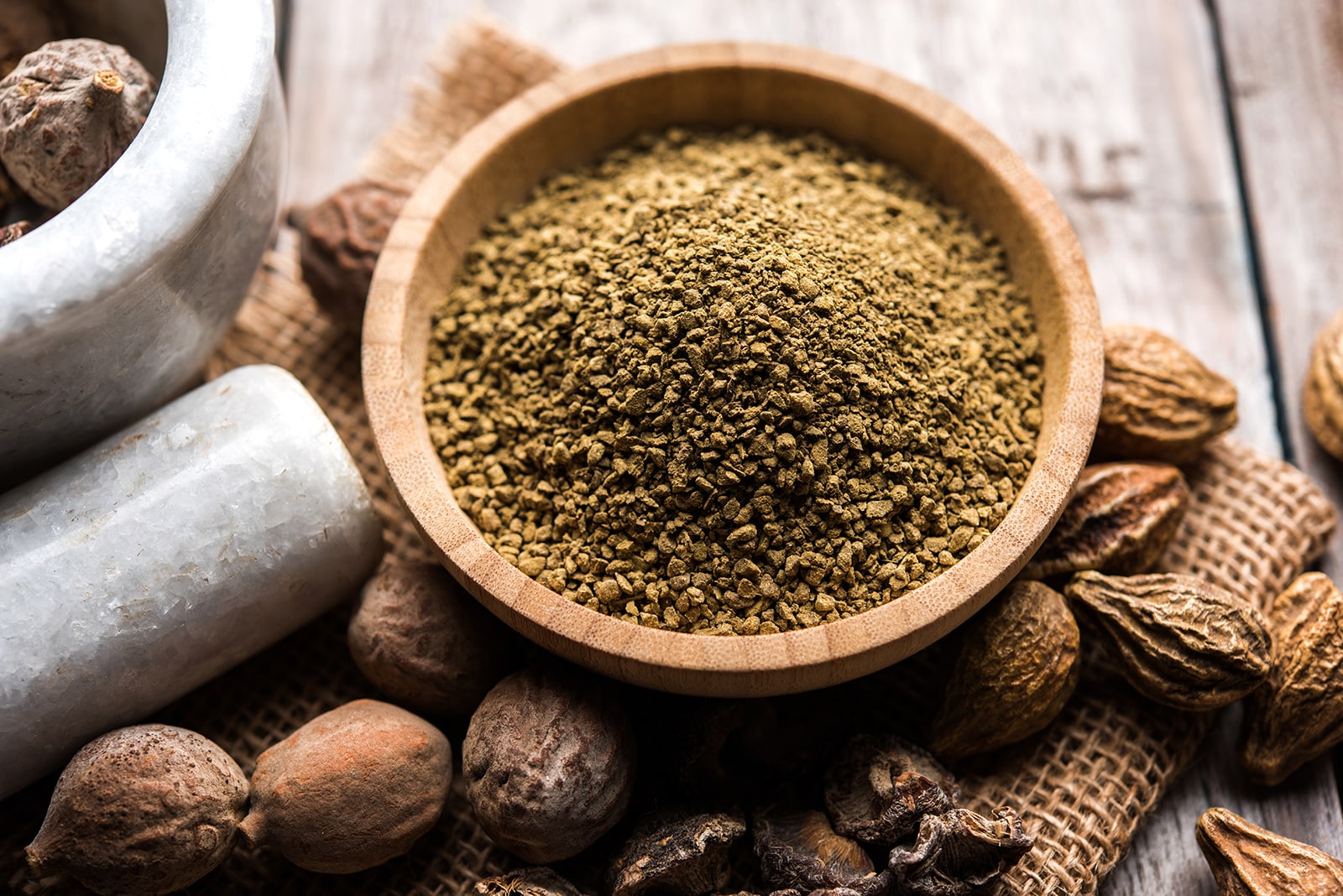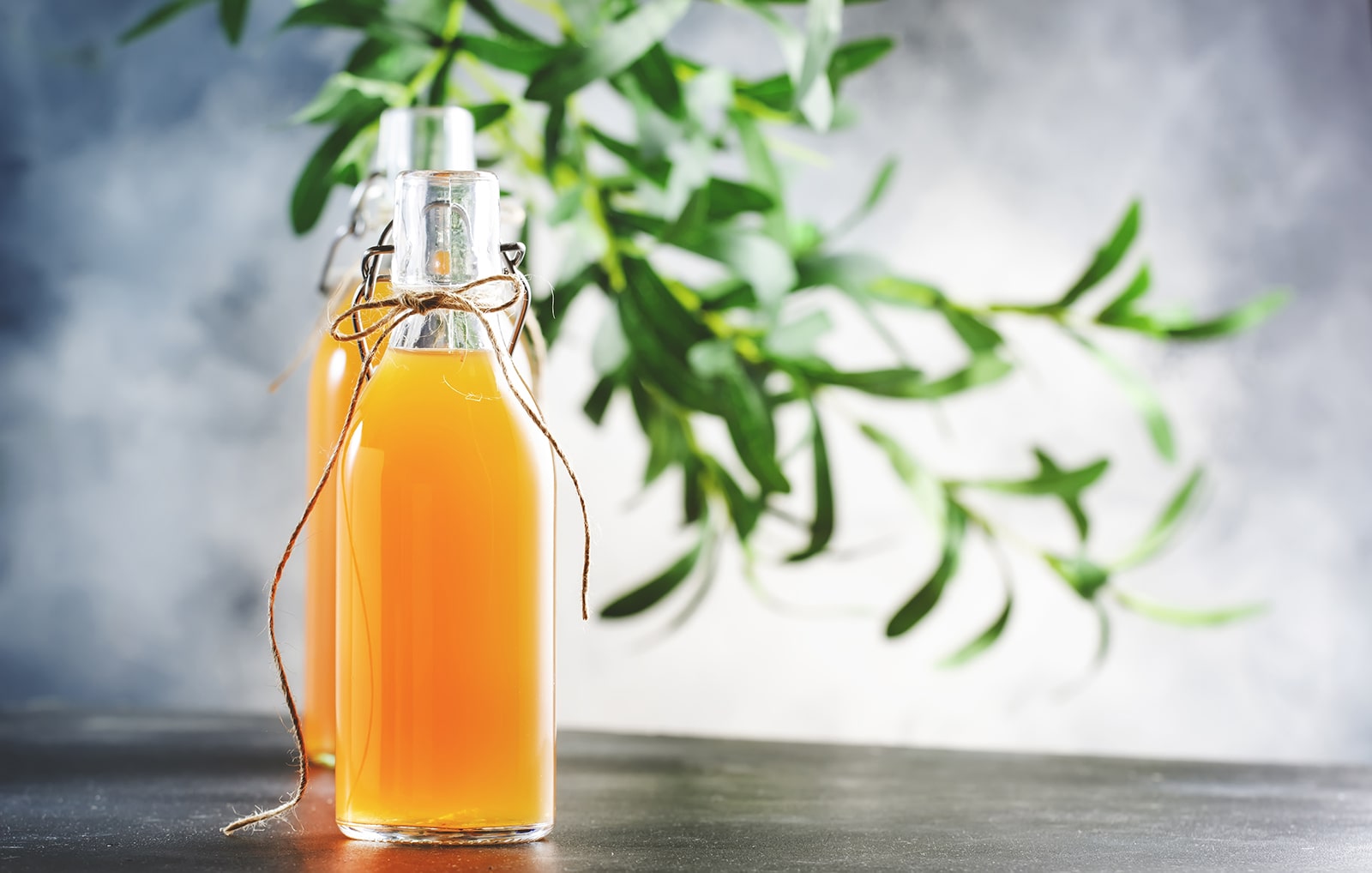Triphala for Colon Health
Triphala For Colon Health
Constipation and improper elimination seem to be a common issue I see in many of my clients. As a result, many ask for a natural solution. Some may turn to ongoing magnesium supplementation; foods known to move the bowels, such as prunes; and herbs, such as cascara and senna.
Even though they are natural, it’s important to note that there are some potential harmful effects of using cascara and senna on an ongoing basis, as they do not address the cause of constipation. Considered “natural laxatives,” they can create dependence and disrupt peristalsis (the natural contractions of the bowel).
Instead, I often recommend an herbal formula that can be very helpful to relieve constipation and restore normal bowel function over time: Triphala.
This is an Ayurvedic formula made of three herbs: Amalaki (Emblica officinalis), Bibhitaki (Terminalia bellirica), and Haritaki (Terminalia chebula). High in vitamin C, linoleic oil, and other nutrients, Triphala offers nutritional benefits, as well as blood and liver cleansing actions. It contains some anthraquinones that help to stimulate bile flow and peristalsis.
There’s also plenty of scientific research and clinical reports demonstrating that Triphala is an effective blood purifier that stimulates bile secretion as it detoxifies the liver, helps digestion and assimilation, and significantly reduces serum cholesterol and lipid levels throughout the body. As a result, it is regarded as a kind of universal panacea and is one of the most commonly prescribed herbal formulas in India.
As always, addressing the root cause of improper elimination is first and foremost. I also usually recommend keeping the magnesium (glycenate or citrate) supplement. Most people are deficient in this very important mineral anyway, and this may be contributing to the problem. In fact lifestyle and diet can play big role in digestive health and proper elimination. (Learn more about the link between elimination and health here).
If constipation is a chronic issue for you, it might be the right time to address it as part of your overall health. Though there are variations in what is considered “normal” from person to person, it’s not a topic that that should be avoided. Maybe it’s time to discuss the best strategy for you with your a qualified healthcare practitioner knowledgeable in this area, like a nutritionist, Ayurvedic practitioner or acupuncturist.
Resources
- Gowda, D.V., G. Muguli, P.R. Rangesh, and R.D. Deshpande. “Phytochemical and Pharmacological Actions of Triphala: Ayurvedic Formulation – A Review.” International Journal of Pharmaceutical Sciences Review & Research 15, no. 2 (July/August 2012).
- Mukherjee, P.K., et al. “Clinical Study of ‘Triphala’ – A Well Known Phytomedicine from India.” Iranian Journal of Pharmacology & Therapeutics 5, no. 1 (January 2006). http://www.bioline.org.br/pdf?pt06008
- Svoboda, R. Prakriti: Your Ayurvedic Constitution. Lotus Press: 1998.
- Tierra, M. “The Wonders of Triphala: Ayurvedic Formula for Internal Purification.” Accessed February 17, 2015. http://www.planetherbs.com/specific-herbs/the-wonders-of-triphala.html
Homemade Kimchi Recipe
Homemade Kimchi Recipe
Kimchi (aka kimchee or gimchi) is a traditional fermented Korean main dish made of vegetables with a variety of seasonings. It is often described as spicy and sour- and it’s currently one of my favorite add ons to meals. Fermented foods and the good bacteria they contain have long been a mainstay for digestive health in many cultures and traditional diets. (You can learn more about the connection of gut health to overall health here).
There are hundreds of varieties of kimchi made from napa cabbage, radish, scallion, or cucumber as a main ingredient. In traditional preparation, kimchi is fermented in jars stored underground for months.
Kimchi Recipe- Making your own at home.
Ingredients:
- 1 daikon radish or a few red radishes, sliced into half moons
- 2 carrots, sliced into half moons
- 2 green tomatoes or tomatillos, chopped
- 1 medium onion (leeks, scallions, or shallots may be substituted, to taste)
- 6 cloves garlic, peeled and chopped
- 2 medium-size chile peppers (jalapeno for mild heat, habanero for more kick), chopped
- 3 tablespoons freshly grated ginger
- 1 tablespoon any brand Himalayan pink salt
Directions:
- Mix all ingredients in a large bowl. “Massage” the mixture with your hands, grabbing handfuls and squeezing repeatedly until vegetables are wilted and excess water is squeezed out.
- Spoon kimchi mixture into a quart-size jar with a wide mouth. Pack tightly, pressing hard until brine rises; the vegetables must be submerged to avoid mold forming. Loosely cover jar with a lid.
- Allow kimchi to ferment at room temperature for about a week. Each day, press the mixture down to keep vegetables submerged in the brine. The longer it ferments, the more sour it becomes.
- When kimchi has fermented to your taste, store in the refrigerator.
Try using turnips, okra, beans, eggplant, or other favorite vegetables that are in season. Enjoy!
Fermented Foods for Gut Health
Fermented Foods for Gut Health
Fermented foods may be setting trends on The Huffington Post and Mind Body Green, but these nutrient-potent foods have been around for thousands of years in cultures around the world, including Japanese, Chinese, Indian, and German cultures.
For people living without modern medicine and refrigeration, fermentation was a simple means of food preservation and a way to imbue foods with the health-enhancing properties of the live bacteria the gut needs to stay in balance. Fermented foods are a potent source of probiotics, which research has shown are essential to powering up the mucosal immune system in your digestive tract and producing antibodies to pathogens.
Incorporate more of these probiotic powerhouses into your diet is one important way of getting those healthy bacteria back into action in your gut.
Fermented Foods Short List
- Cultured Dairy: Yogurt, kefir, buttermilk, sour cream, some cheeses
- Veggies: Beets, radishes, tomatoes, onions, garlic, kimchi, green beans, sauerkraut
- Condiments fermented at home or commercially: ketchup, relish, salsa, chutney
- Other: Miso, tempeh, tofu, soy sauce
Fermented Food Facts & Tips
- All fermented foods must be kept cool to maintain the live cultures.
- Food labels must be marked “fermented.”
- Fermented and “pasteurized” do not go together. Pasteurization kills live cultures.
- Pickled is not the same as fermented (unless indicated on the label). Pickled foods are soaked in vinegar or brine. This is how many traditionally fermented foods are manufactured these days, like pickles and sauerkraut.
- Choose organic, non-GMO items or locally farmed products. This is especially important in dairy and soy products.
- Unfortunately, if you’re sensitive or allergic to dairy, fermentation does not always make it safe for you to eat. Luckily there are many non-dairy alternatives like fermented coconut and soy products.
- Start with small servings of fermented foods, one to two times a day.
- Toss fermented veggies into salads; enjoy as a snack or as a side dish.
- Add a spoonful or two to your morning smoothie (e.g., beets, kefir).
Wondering if you still need to take a probiotic? Good question! Check out this blog from archives for my thoughts on that.
Resources
- Chilton, S., J. Burton, and G. Reid. “Inclusion of Fermented Foods in Food Guides Around the World.” Abstract. Nutrients 7, no. 1 (January 2015): 390-404. http://www.mdpi.com/2072-6643/7/1/390
- The Huffington Post. Headlines on fermented food trend. http://www.huffingtonpost.com/news/fermented-foods/
- Mercola, J. “Fermented Foods: How to ‘Culture’ Your Way to Good Health.” Accessed February 2015. http://articles.mercola.com/fermented-foods.aspx
- Rawlings, D. Fermented Foods for Health: Use the Power of Probiotic Foods to Improve Your Digestion, Strengthen Your Immunity, and Prevent Illness. Fair Winds Press: 2013.
- Schwenk, D. Cultured Food for Life: How to Make and Serve Delicious Probiotic Foods for Better Health and Wellness. Hay House, Inc.: 2013.
- Williams, D. “Fermented Foods that Boost Digestive Health.” Reviewed February 6, 2014. http://www.drdavidwilliams.com/traditional-fermented-foods-examples/
What Your Bowel Movements Say about Your Health
Poop
Unless you’re the parent of a toddler who has just mastered “going potty,” poop is probably not a hot topic in your household.
But did you know, that frequency aside, the composition of what you deposit into the toilet has important implications for health? Features —such as the size, color, shape, odor, and consistency indicate how well the gastrointestinal (GI) tract is functioning. Those same features also provide clues about how your body is (or isn’t) faring against threats of infection and more serious diseases like celiac disease, hepatitis, urinary tract infections, malabsorption disorders, inflammatory bowel disease, pancreatitis, and cancer.
To give you an idea of what healthy, normal stool looks like, check out the Bristol Stool Chart to the right (warning: if you’re having lunch right now you might wanna skip this part ![]()
The healthy range for fecal matter is of a consistency that is not too hard, not too soft, and mostly solid.
-As opposed to lumpy, pellet-like, or liquid. Normal stool color is in the light-to-medium brown range and is not offensively odorous. Also, bowel movements (BMs) should pass easily from your body to the toilet.
5 BMs that Require Medical Attention
Unless you are aware of dietary changes or a medication that could produce the following types of stool, it’s advisable to seek medical attention if you observe the following changes in BMs.
- Stool that is hard to pass, requires straining, or is accompanied by abdominal pain.
- Black, tarry stool might indicate infection or GI bleeding, while bright red stool could indicate infection and/or bleeding in the GI tract or anus. Seek immediate medical attention.
- White, pale, or grey stool could indicate problems with the liver, bile ducts, or pancreas.
- Yellow stool could indicate serious infection or gallbladder problems.
- Mucus in the stool can indicate inflammation, infection, or even cancer.
How Often Should You Go?
How frequently you have a BM is important, too. And, what’s typical for you may be different for other people in your family. For most people, three weekly BMs are considered the norm. No matter how often you poop, you should not have to strain or experience pain while excreting. Additionally, be aware that the appearance and frequency of BMs will vary based on what’s in your diet, sleep and exercise patterns, hormonal changes, travel, stress, hydration level, medications or supplements you are taking, and exposure to toxins (from nicotine to industrial toxins).
How Low Should You Go?
There’s also evidence that the position you take to evacuate the bowels has health implications for the physical structures of the GI tract. So much so that some scientists indicate sitting to poop is a contributing factor in the development of colon and pelvic diseases. Before potty training, young children squat to poop in their diapers—they don’t sit. Yes, there’s a difference between squatting and sitting. The modern toilet places the thighs at a 90-degree angle to the abdomen, whereas squatting has a much deeper angle that gives more motility to the intestinal muscles and organs. Evacuating the bowels is much easier on the body in the squatting versus seated position. Toilet position should be a consideration for everyone over the age of five, but is especially important for the elderly, the disabled, and individuals with compromised mobility.
You can learn more about toilet position in this video from Squatty Potty
Need a little help in this department? Curious how your digestive health and elimination habits could be effecting your health? Contact me for information about a consultation today.
Resources:
- Mercola, J. “What You See in the Toilet Can Give You Valuable Insights into Your Health.” Accessed February 2015. http://articles.mercola.com/sites/articles/archive/2013/02/14/normal-stool.aspx
- Monastyrsky, K. “Gut Sense: What Exactly Are Normal Stools?” Accessed February 2015. http://www.gutsense.org/constipation/normal_stools.html
- Sikirov, D. “Comparison of Straining During Defecation in Three Positions: Results and Implications for Human Health.” Abstract. Digestive Diseases and Sciences 48, no. 7 (July 2003): 1201-5. http://www.ncbi.nlm.nih.gov/pubmed/12870773
- Step and Go. “Step and Go Ergonomically Correct Toilet Position.” Accessed February 2015. http://www.stepandgo.com




